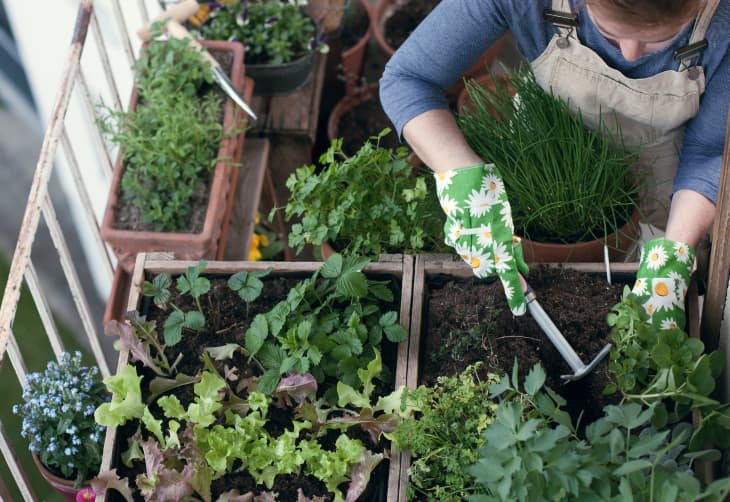Why You Need This 230-Year-Old Gardening Guide on Your Bookshelf

If you’ve ever been thrifting or perused your grandparents’ stash of old periodicals, you may have come across copies of The Old Farmer’s Almanac, a vintage-looking book that’s been around since 1792 and claims to predict the weather on a yearly basis with 80 percent accuracy. You might dismiss the book as old-timey, but if you’re a gardener, it’s actually worth keeping your own current copy around.
While modern technology can use satellite imaging to forecast weather trends, in the days of yore, farmers relied on books like The Old Farmer’s Almanac to determine when to sow and harvest. The book makes predictions about things like first and last frost, best time to plant, best time to fertilize, and more, all based on a secret formula that still incorporates some of the founding editor’s original methods as well as modern technologies. Three major studies make up the basis of the almanac’s predictions: solar science, which covers things like sun spots; climatology, which focuses on weather patterns; and meteorology, which focuses on the atmosphere.
Although it may seem archaic at first glance, there’s a reason that it’s stood the test of time and is North America’s oldest continuously published periodical: It’s often pretty spot-on. Gardening expert Anna Ohler, who co-owns Bright Lane Gardens with her husband, Nick, consults it when planning her own gardening calendar, noting that the weather forecasts are remarkably accurate.
If you want to follow her lead, grab a physical copy (or use the Almanac website) and find your area of the country. (Online, you can search your specific zip code.) You’ll be greeted with a whole host of area-specific information, such as the likelihood of frost at a given point in the season. “It also recommends when to plant, harvest, or fertilize certain plants based on your region,” Ohler adds.
The information is crucial even if you’re a small-time gardener. After all, if you plant veggie gardens or other tender plants too early, they could be killed by the last frost of spring; too late, and your growing season might be cut short by the first frost of fall. Using a guide that helps predict when those dates will fall helps to narrow your gardening calendar so you’re making the most of the warm growing season.
If you have the space, invest in the physical copy, which is a “fun point of interest to have on the coffee table,” Ohler says. It also features gardening and lifestyle tips, so it’s a worthwhile reference book for anyone who’s looking to learn more about growing and caring for plants.
The Old Farmer’s Almanac might not be your only point of reference when it comes to planning your garden, nor should it be — it would be silly to ignore timely weather data and updated forecasts when they’re available. But when it comes to planning out a basic timeline, it’s a helpful tool that’s worth having around.
Whether you’re an avid gardener or a curious beginner, put the almanac on your list of resources. With a history of over two-hundred years and counting, generations of gardeners have relied on it as a consistent resource. You will have healthy plants, a beautiful outdoor space, and be in good company with centuries of others.